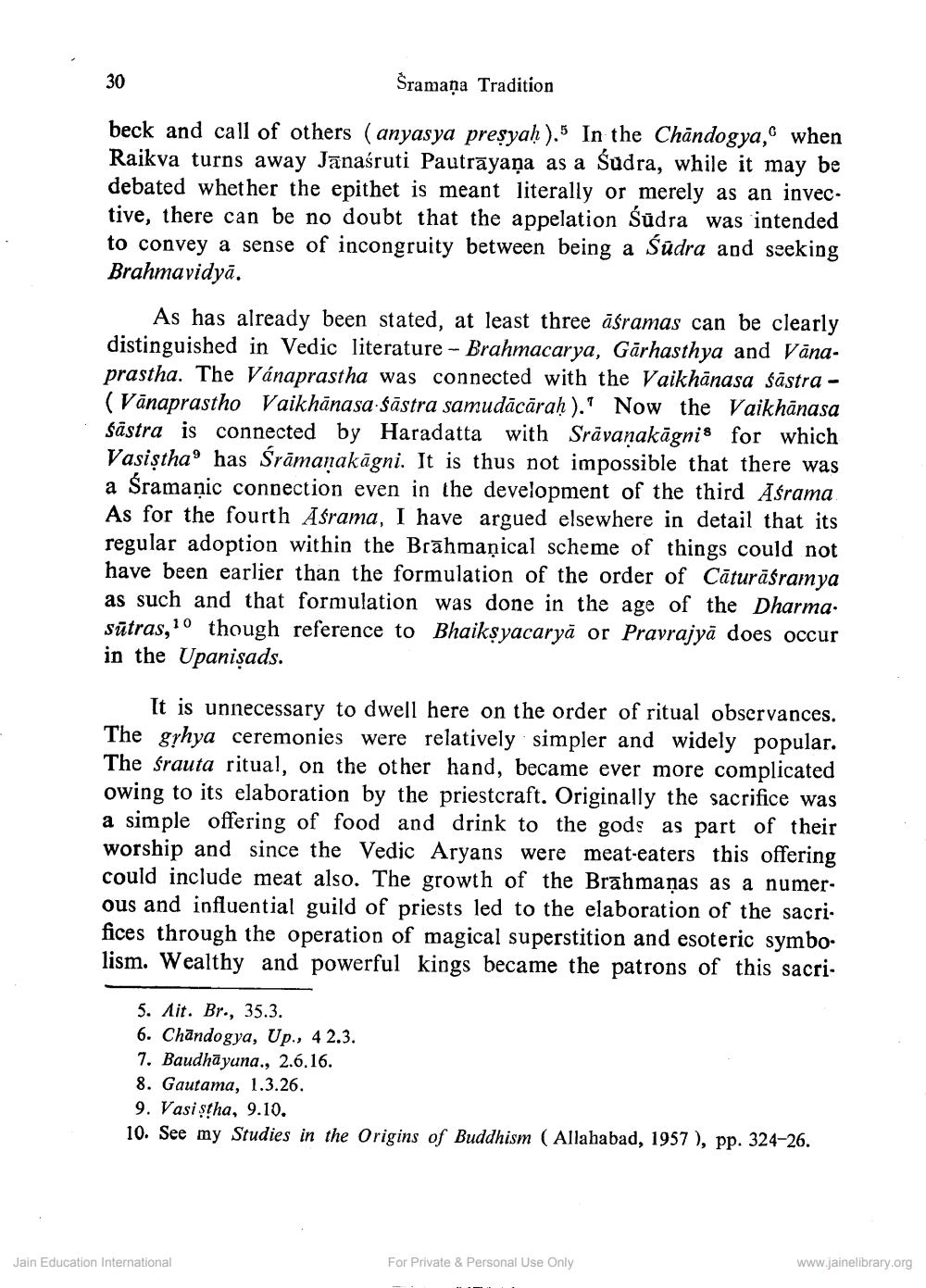________________
30
Šramaņa Tradition
beck and call of others (anyasya presyaḥ),5 In the Chāndogya, when Raikva turns away Jānaśruti Pautrāyaṇa as a Sudra, while it may be debated whether the epithet is meant literally or merely as an invective, there can be no doubt that the appelation Sūdra was intended to convey a sense of incongruity between being a Sūdra and seeking Brahmavidyā.
As has already been stated, at least three āśramas can be clearly distinguished in Vedic literature - Brahmacarya, Gārhasthya and Vānaprastha. The Vánaprastha was connected with the Vaikhānasa śāstra - (Vānaprastho Vaikhānasa-śāstra samudācārah).' Now the Vaikhānasa Sastra is connected by Haradatta with Srāvanakāgnis for which Vasişthao has Śrāmaņakāgni. It is thus not impossible that there was a Śramanic connection even in the development of the third Aśrama As for the fourth Aśrama, I have argued elsewhere in detail that its regular adoption within the Brāhmaṇical scheme of things could not have been earlier than the formulation of the order of Cāturāśramya as such and that formulation was done in the age of the DharmaSūtras, 10 though reference to Bhaikşyacaryā or Pravrajyā does occur in the Upanişads.
It is unnecessary to dwell here on the order of ritual observances. The grhya ceremonies were relatively simpler and widely popular. The srauta ritual, on the other hand, became ever more complicated owing to its elaboration by the priestcraft. Originally the sacrifice was a simple offering of food and drink to the gods as part of their worship and since the Vedic Aryans were meat-eaters this offering could include meat also. The growth of the Brahmanas as a numerous and influential guild of priests led to the elaboration of the sacri. fices through the operation of magical superstition and esoteric symbo. lism. Wealthy and powerful kings became the patrons of this sacri.
5. Ait. Br., 35.3. 6. Chandogya, Up., 4 2.3. 7. Baudhāyuna., 2.6.16. 8. Gautama, 1.3.26. 9. Vasiştha, 9.10. 10. See my Studies in the Origins of Buddhism (Allahabad, 1957), pp. 324-26.
Jain Education International
For Private & Personal Use Only
www.jainelibrary.org




